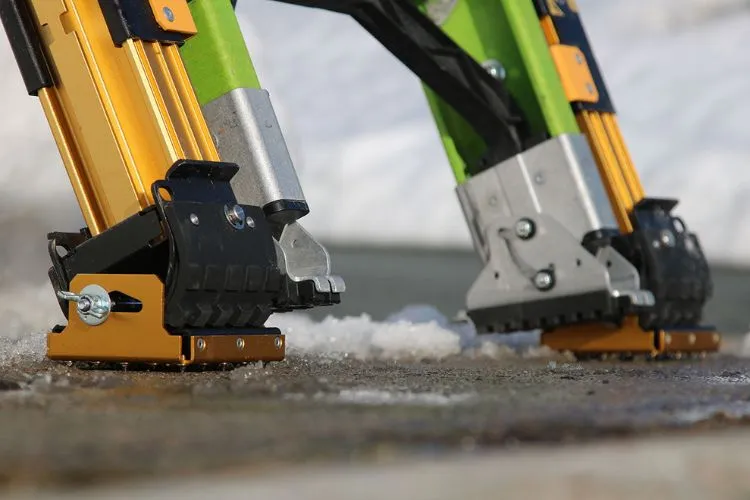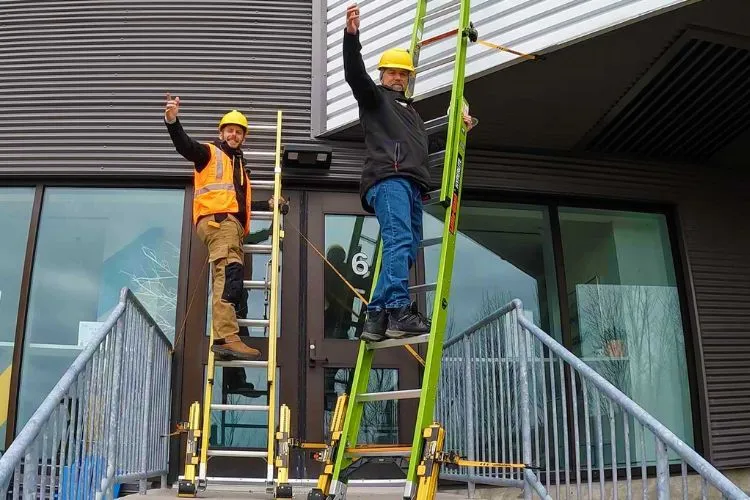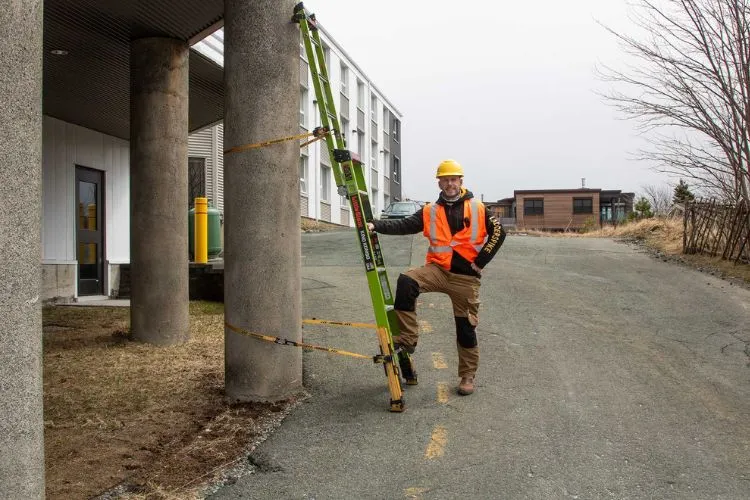In the realm of working at heights, safety stands paramount. Ladders, as common tools, require special attention to ensure they are safe for use.
A critical aspect of ladder safety lies in their footing. This brings us to the topic of our discussion:
So, are footing ladders safe?
Through this article, we aim to dissect various facets of footing ladders, exploring their design, usage, and maintenance to ascertain their safety.

Understanding Footing Ladders
At the very outset, it’s essential to comprehend what footing ladders are. These are ladders equipped with special feet designed to enhance stability and grip.
Often, they find their application in diverse settings, from household chores to industrial tasks. The design of a footing ladder focuses on preventing slips and ensuring stability, thereby forming the first line of safety.
Ladder Safety: General Overview
Safety guidelines by authoritative bodies like OSHA (Occupational Safety and Health Administration) and ANSI (American National Standards Institute) underline the critical role of footing in ladder stability.
A ladder’s footing, if compromised, can lead to accidents. Thus, adherence to general ladder safety guidelines, especially concerning footing, becomes crucial.
Are Footing Ladders Safe?
Design and Material
The safety of footing ladders begins with their design and the materials used for construction. The design accounts for a wide base and feet that offer a strong grip.
Materials often include rubber or synthetic compounds that provide friction against different surfaces. Durability and resistance to wear are key indicators of a ladder’s safety.
Stability and Footing
The core purpose of footing is to offer stability. Ladders come with different footing designs, including rubber feet for indoor use and spiked feet for outdoor environments. Innovative designs incorporate levelers to adapt to uneven surfaces, enhancing safety.
Usage and Handling
Correct usage and handling of footing ladders are pivotal to safety. This involves setting up ladders on stable and even ground to prevent tilts or falls. Users are advised against placing ladders on slippery or unstable surfaces.
Maintenance Checkpoints
Maintenance plays a vital role in ensuring the safety of footing ladders. Regular checks for wear, damage to the feet, or the ladder structure help in preventing accidents. Damaged footing can compromise the ladder’s stability and should prompt immediate repair or replacement.
Pro Tips for Ensuring Footing Ladder Safety
Checking ladder footing before every use is a pro tip that cannot be overstressed. A quick inspection for damage or wear can prevent mishaps.
Moreover, ladders should only be placed on surfaces that they are designed for, keeping in mind their load capacity and duty rating.

Footing Ladders and Specific Applications
Industrial Use
In industrial settings, footing ladders must have safety features that meet specific requirements. This includes enhanced stability and strength to support the added weight of tools and equipment.
Household Use
For home use, footing ladders should be lightweight yet sturdy, with feet designed to protect floors from damage while ensuring the ladder stays in place.
Innovations in Footing Ladder Safety
Innovation in ladder technology has led to the development of safer, more reliable footing. This includes adjustable feet, wider bases for greater stability, and materials offering better grip on various surfaces. These advancements make footing ladders safer for all users.
Choosing the Right Footing Ladder
Selecting a ladder involves considering its intended use, load capacity, and safety features. The right ladder for the task significantly reduces the risk of accidents.
This selection process emphasizes on the ladder’s footing, as it lays the foundation for overall stability and safety.
Safety Regulations and Compliance
Adherence to safety regulations and ensuring compliance with standards are fundamental to the safe use of footing ladders. Ladders that meet OSHA and ANSI standards offer assurance of their safety and reliability. Ignoring these standards can lead to dire consequences.
Preventive Measures for Ladder Safety

Proactive steps are essential in minimizing the risk of ladder-related incidents. Both individuals and organizations should prioritize regular safety audits to identify potential hazards before they lead to accidents.
These audits often involve checking ladders for structural integrity, ensuring they meet regulatory safety standards, and confirming that they are suitable for their intended use.
Integrating technology can also play a pivotal role in enhancing ladder safety. For instance, sensors can be attached to ladders to monitor stability in real-time.
These devices can alert users to unsafe conditions, like a shift in balance or excessive load, allowing for immediate corrective action. Other technological tools may include mobile apps for conducting pre-use safety checklists or augmented reality (AR) for ladder safety training.
It’s also vital for organizations to foster a safety-conscious culture where regular training and adherence to safety protocols are ingrained in the workforce.
Encouraging open communication about safety concerns and recognizing safe practices motivates workers to prioritize their well-being and that of their colleagues.
In essence, a combined approach of diligent maintenance, thoughtful use of technology, and a strong safety culture can dramatically reduce the prevalence of ladder accidents.
Frequently Asked Questions (FAQs)
How often should ladder feet be inspected?
Ladder feet should be inspected before every use to detect damage or wear that could compromise safety.
What should be done if the ladder footing is damaged?
Damaged ladder footing should lead to immediate cessation of use until repairs or replacements are made.
Are all footing ladders suitable for use on soft ground?
Not all ladders are suitable for soft ground. Specialized ladders with broad-based or spiked feet are designed for such environments.
How does the weight of the user affect the footing of a ladder?
The user’s weight impacts the ladder’s stability. Choosing ladders with the appropriate load capacity is crucial to maintain footing stability.
Can footing ladders be safely used on slippery surfaces like tiles?
Caution must be exercised on slippery surfaces. Ladders with non-slip feet designed for such surfaces should be chosen for tasks in these environments.
Conclusion:
In conclusion, footing ladders, when designed, used, and maintained properly, offer a high level of safety for various tasks. It’s essential for users to understand their operation, acknowledge their limitations, and adhere to safety guidelines to ensure their safe use.
In essence, the safety of footing ladders hinges on a combination of their design, proper usage, and regular maintenance. With informed practices, users can leverage the utility of footing ladders safely and effectively.


